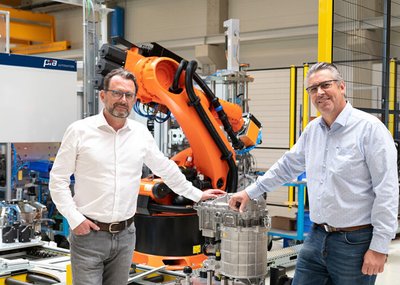Center for Automotive Research (CAR), Ann Arbor, Michigan, USA, and aPriori, organized a seminar to explore the major challenges facing automotive — from design to sourcing, and reducing the environmental impact from production.
Mark Rushton, Senior Product Marketing Manager, aPriori, said we are probably seeing the end of ICE. Change of architecture from internal combustion engine (ICE) + fuel tank to motors and batteries are now happening. Manufacturing processes for ICEV may not be the best ones for BEVs. Also, BEVs have a higher cost, and CO2e to manufacture than ICE. Making the right design and cost decisions can optimize cost and CO2e.
Gibson Peters, Sustainability Product Manager, aPriori, talked about the path to net zero. There will be no new gas-powered vehicles in the EU from 2035, and from 2030 in the UK. Makers are evaluating alternative manufacturing processes for cost and carbon. Eg., for battery, process can be either die cast or machined, USA as manufacturing location, aluminum ANSI AL380 as material, and volume 5,500 annually. We are also looking at process that will lead to lower production of CO2e emissions. We are also looking at the cost.
Jim Farley, CEO, Ford, had said: “We didn’t know our wiring harness for Mach-E was 1.6 km longer than it needed to be. We didn’t know it’s 70 pounds heavier, and that’s worth $300 of battery cost. The real driver of our future profitability on Model e is second cycle products.”
Ms. April Guenet, Product Marketing Manager, aPriori, stated some automotive makers are seeing change in manufacturing processes with high-pressure die casting. They are moving to single-piece cast aluminum front and rear ends.
There are challenges for considering alternative manufacturing processes. Design for manufacturability poses questions such as soucring and manufacturing constraints. Makers are also looking at carbon footprint, and lowering the embodied carbon for sustainability. They also need to ensure the process is cost effective.
Teams are collaborating today in many ways. Conversations can be difficult to trace and keep track of. Locating and tracing data is also very important.
We have some key challenges, as siloed teams and data still exist. Design provides the biggest opportunity. You rarely get insights into cost, sustainability, and manufacturing feasibility. Cost/manufacturing engineering can get outnumbered, and often a bottleneck. They also lack resources. Sourcing is tasked with cost and carbon reductions. There are little improvements that can be made at this late stage. They are usually disconnected from design decisions.
We need to look at opportunities for breaking down walls among departments. Disconnected departments need to collaborate on common data with inputs from variety of stakeholders. Visibility into cost and carbon are in the development process.
In a scenario, manufacturer is developing a next-generation product. Competitor A has fast to get to market first with a new battery-powered car. Based on market intelligence, their product us not fast enough, and price is too high. All new products should incorporate design for sustainability principles, and report on CO2 footprint. They should also reduce lead time.
Rushton added that the goal for manufacturers should be cost and carbon. Location is also going to be a big driver. Cost engineering team can look at cycle time, material and machine suitability, and costs. We need to get an idea of energy usage, material carbon, local energy mix, and availability of machines. Sourcing and sustainability are very important.
From a cost per component of $1.46, 124g, 833g CO2e, and 12 weeks at a China factory, we can bring it down to $0.30-0.25, 21.14g, and 177g/173g, or 146g, and 3 weeks, respectively, at a US or Mexico location. For every initiative, we need to calculate impact on product and CO2e emissions.
aPriori provides a unique, end-to-end digital twin solution that empowers manufacturers to unlock and identify new opportunities rapidly for innovation, growth, cost savings, and sustainability. With aPriori, customers achieve a ~600% RoI within three years, and payback within six months of adopting our software platform.
Dr. K. Venkatesh Prasad, Senior VP & Chief Innovation Officer, Center for Automotive Research (CAR), was the moderator.
Source: www.dqindia.com









